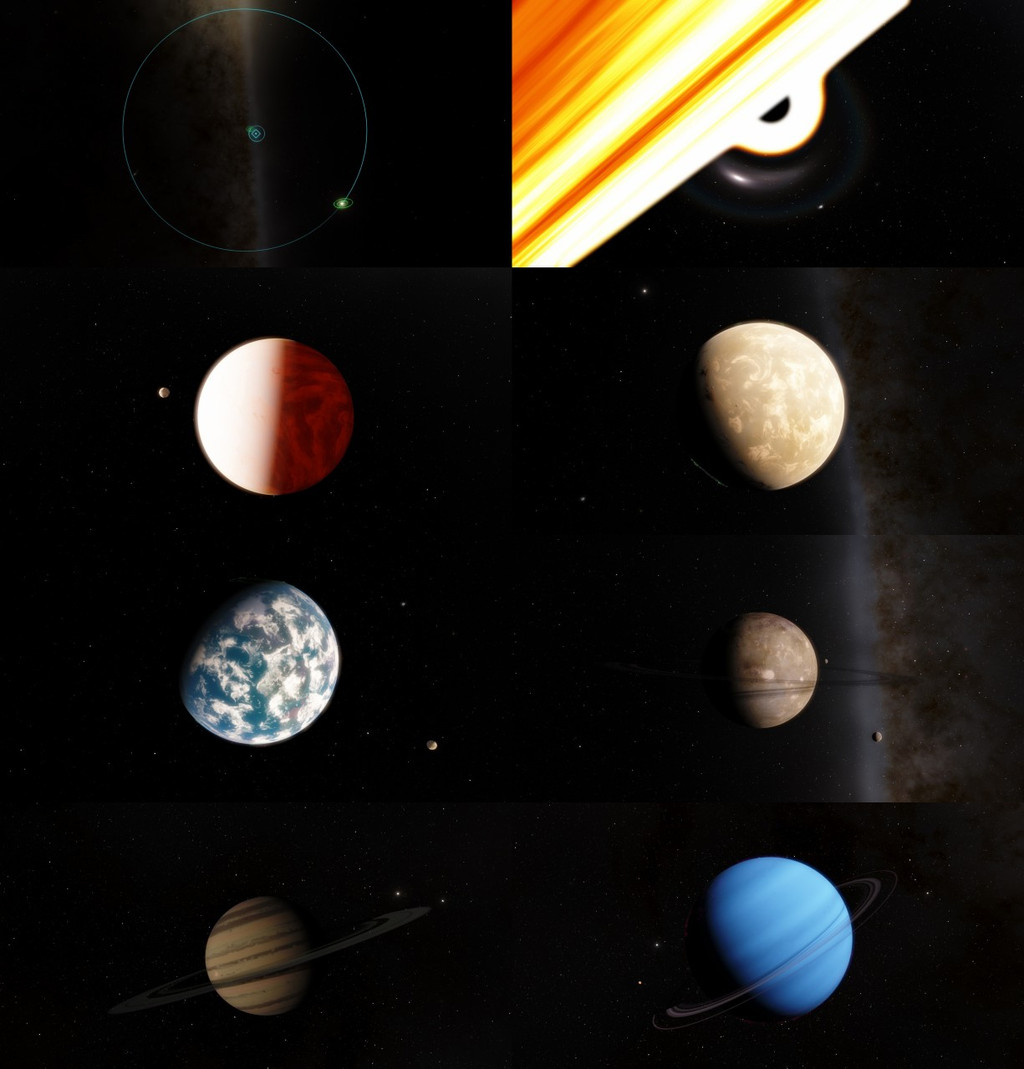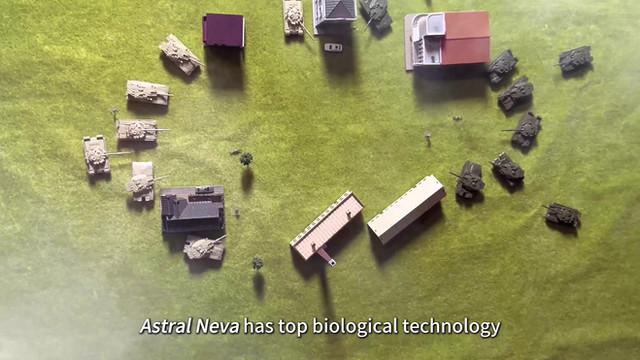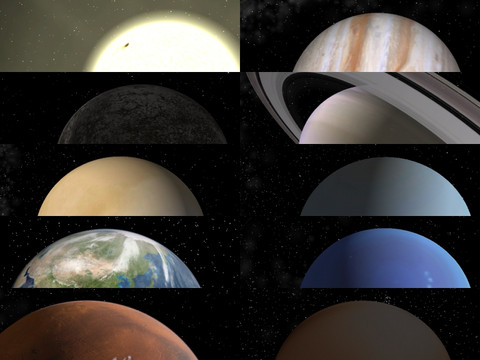HOME | DD
 F0xridley — Solar System Wip
F0xridley — Solar System Wip

#blackhole #moons #planets #solarsystem #space #spaceengine #starsystem
Published: 2018-06-28 01:47:39 +0000 UTC; Views: 279; Favourites: 0; Downloads: 0
Redirect to original
Description
These are some views of the custom solar system I have been working on in Space Engine. I have not yet figured out how to make custom surfaces so things such as continent arrangement and cloud bands are still procedurally generated by the engine, but I have defined traits such as size, mass, orbit etc. The planets are named after islands and island groups according to temperature; hot planets are named after islands with hot climates and cold planets after cold islands.Not all of the planets are shown as it would make the image would too big.
Panel 1: overall layout.
It is a binary system consisting of a sunlike star (outer orbit) and a large stellar-mass black hole (inner orbit), orbiting their mutual center of mass once every 766 years. The system contains 12 planets: four orbiting the black hole and eight orbiting the main-sequence star.
Panel 2: Rahu and Ketu
Rahu, seen in the foreground is a black hole of about 15 solar masses, shown here with an accretion disk. It contains the majority of the system's mass. Orbiting it are four small icy planets.
Ketu is in the background, its image distorted by Rahu's gravity, is a star yellow dwarf star with 97% the luminosity of our sun. Eight planets of a wide variety orbit it, a few of which are shown below.
Panel 3: Sulawesi and Pantar
Sulawesi, the second planet from Ketu, is a Venus-like hell. It is nearly twice the diameter of Earth and more than nine times as massive. Dense clouds obscure its surface and temperatures approach 1100 degrees Fahrenheit and pressure exceeds 80 times that at sea level. To the left is its moon Pantar, similar to our own moon, only hotter and a bit larger.
Panel 4: Luzon
Luzon, the third planet from Ketu, is planet about two-thirds the diameter of Earth. It is a fairly hot, low-pressure world, though much milder than Sulawesi. Temperatures, but not pressures, near the poles may be suitable for humans. The bright "star" in the upper left is Luzon's single small moon, Sidapa.
Panel 5: Ithaca and Ogygia
Ithaca, the fourth planet, is nearly identical to Earth. It is slightly larger and denser and has a denser atmosphere similar in composition to Earth's. Complex life covers much of its land surface. I have some vague notions for stories involving the people that would live here. To the lower right is the larger of Ithaca's two moons, Ogygia, an airless world a little less than half the diameter of Earth's moon.
Panel 6: Vilsandi
Vilsandi, the fifth planet, is a bit like Mars, but not much smaller than Earth, It is a cold, thin-aired world with a few volcanoes scattered across its surface. A set of dark rings surround it. Its two larger moons, Sila and Tornrak, are visible in this image. A third small moon, Amarok, is out of the frame.
Panel 7: Ellesmere
Ellesmere, the sixth planet, is a gas giant about two-thirds the mass of Jupiter. It is the largest and most massive planet in the system. I have not yet completed its set of moons. Two of those moons are visible in the shot at bright "stars."
Panel 8: Ushakovskaya
Ushakovskaya, the eighth planet, is a cold ice giant similar to Neptune or Uranus, though less massive than either. It has a set of thin, close rings. It is the only giant planet for which I have completed the set of moons, of which there are 11. Two of those moons are in the shot. The orange object is its largest moon, Xanadu, and the bright "star" above it is Honalee.
Space Engine belongs to Vladimir Romanyuk























